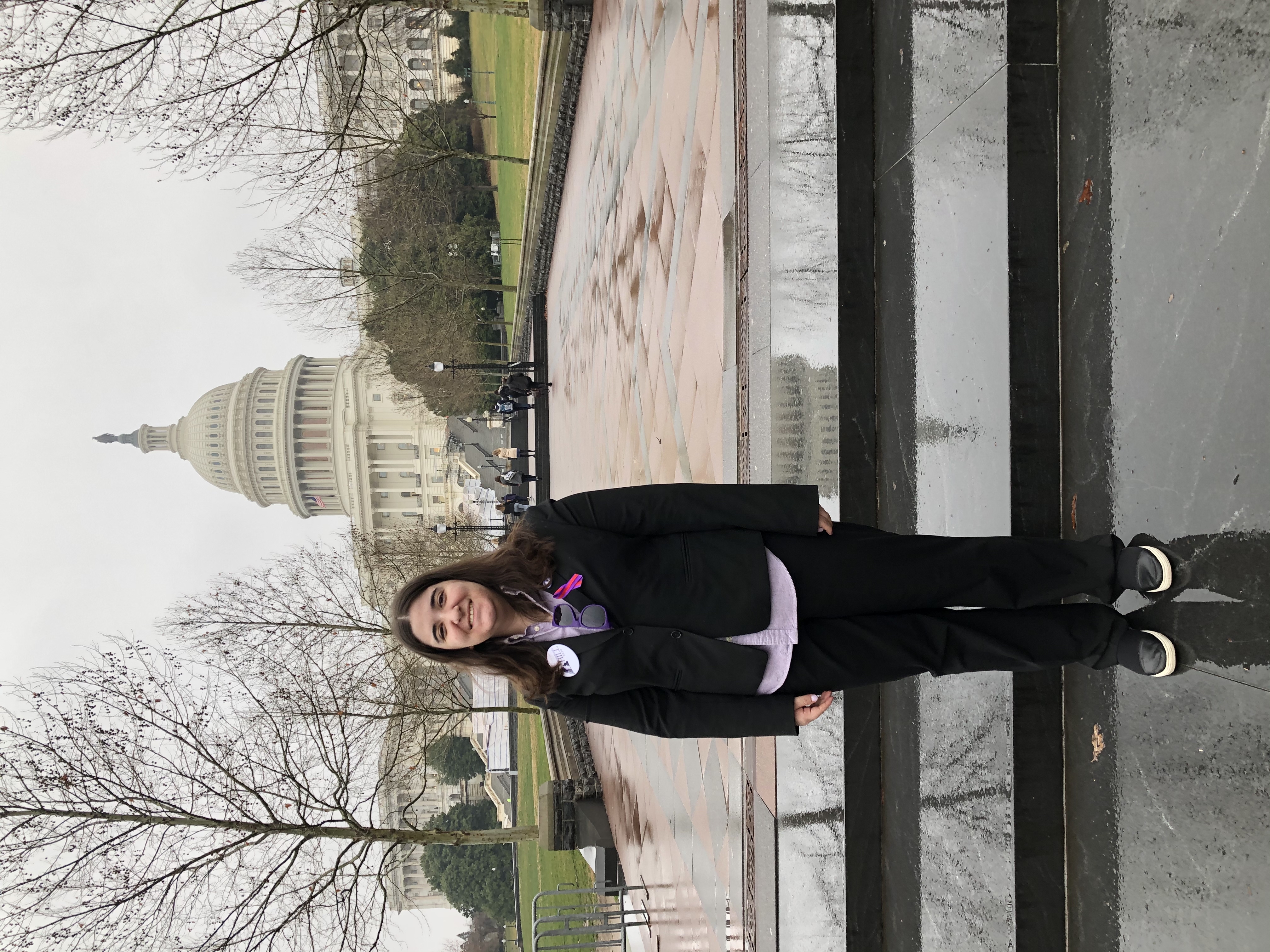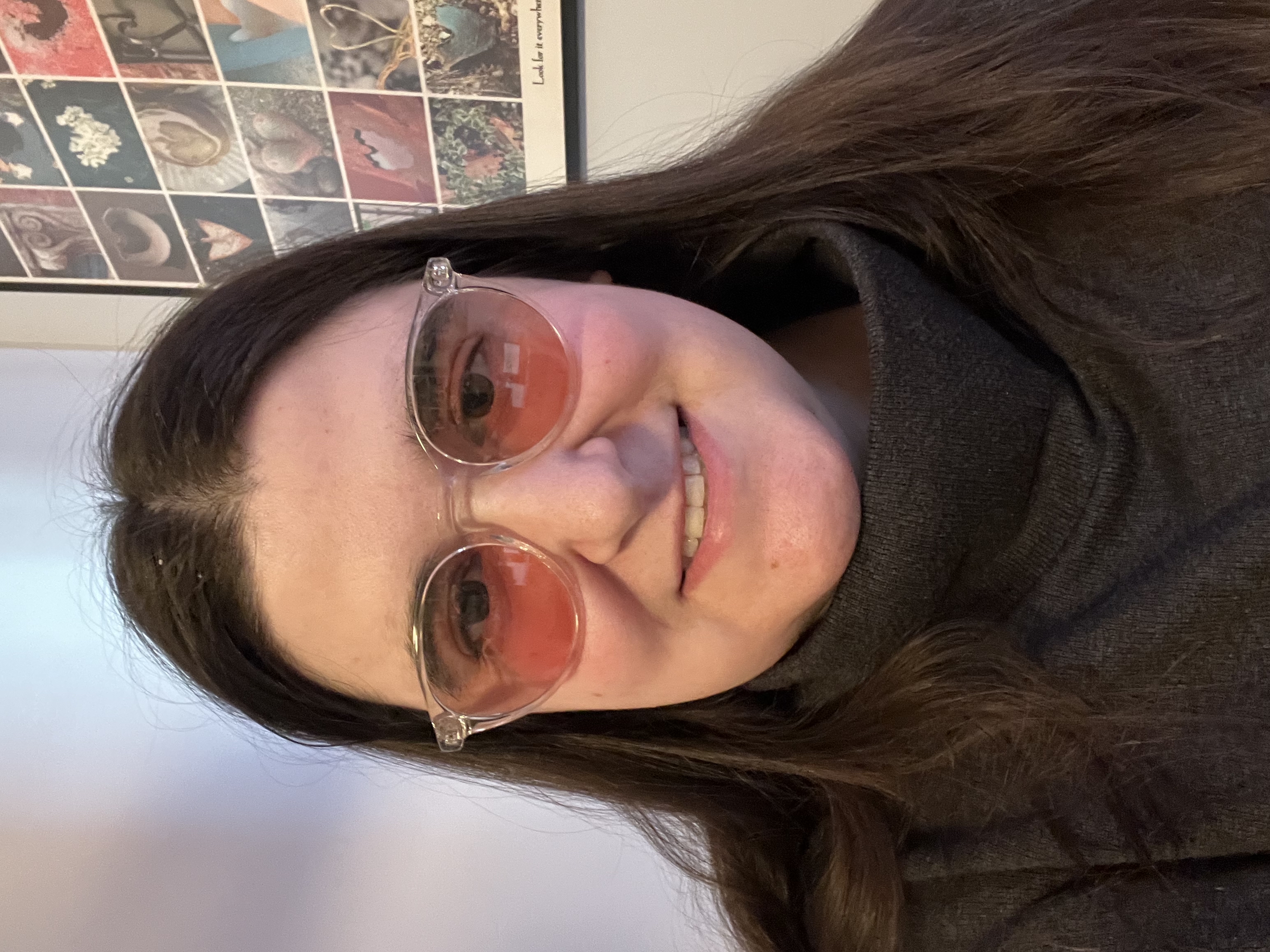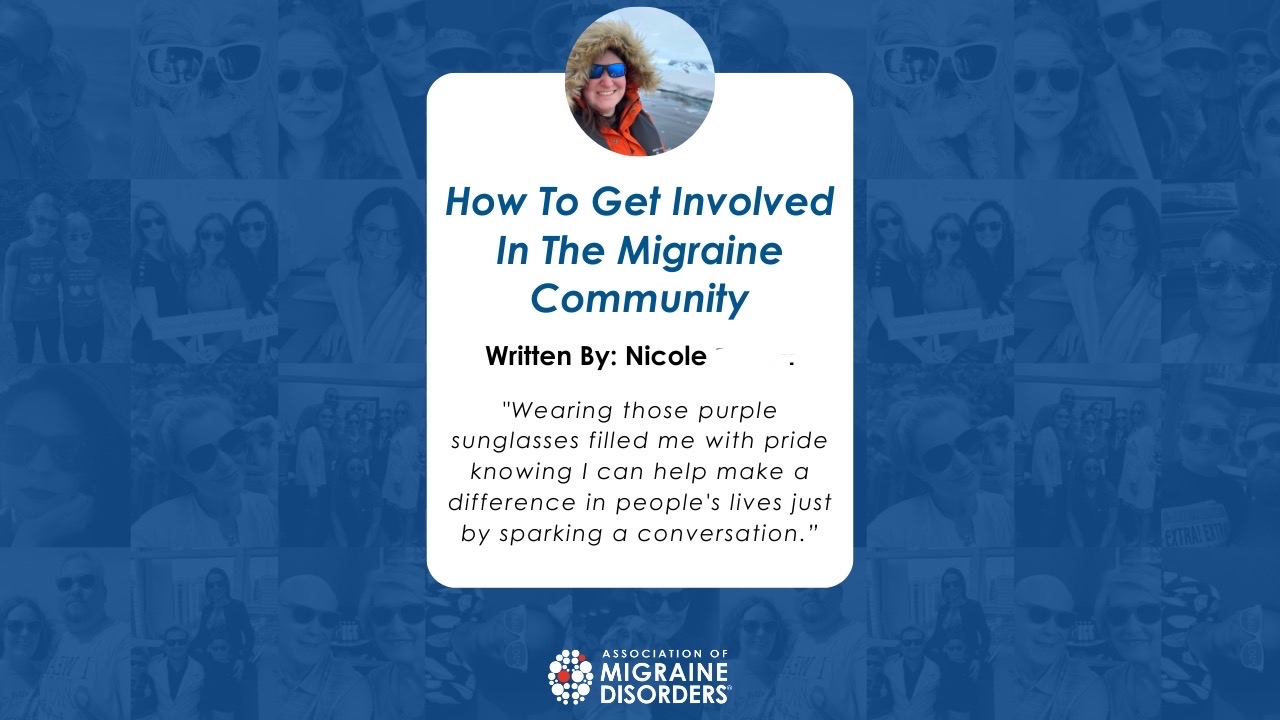About
Nikki, MPH. Chronic migraine advocate

I share my journey, tips and life with chronic migraine, hEDS, psoriatic arthritis, MCAS, POTS and more.

I share my journey, tips and life with chronic migraine, hEDS, psoriatic arthritis, MCAS, POTS and more.

The following are links to published blog posts I wrote on a variety of topics for different migraine and headache organizations

On February 8, 2023, the Association of Migraine Disorders published my blog post on how to get involved in the migraine community.
On June 26, 2021, CHAMP published my blog post about nerve blocks for migraine for Migraine and Headache Awareness Month in June.
On February 15, 2020, Chronic Migraine Awareness, Inc published my blog post about my experience at the 13th annual Headache on the Hill as a patient advocate.
On June 15, 2020, CHAMP published my blog post for Migraine and Headache Awareness Month in June.
On February 1, 2020, Chronic Migraine Awareness Inc published my blog post on gepants.
This letter will be continuously updated with different aspects of bias based on feedback and observations
Together, we can work to address stigmatizing language and images used in the migraine community.
Dear ____ (insert brand, company, or organization name here),
My name is _____ and I live with migraine and am a migraine advocate.
I am brining your attention to some of the language/images you that perpetuates migraine stigma. (You may wish to provide specific examples or screenshots).
1. Was the term migraines (plural) used?
Migraine advocates prefer to use the word migraine (singular) or migraine disease as migraines implies migraine is an acute condition.
Migraine disease is a complex neurological disease that impacts the entire body and has a genetic predisposition. The term migraine disease highlights migraine is so much more than “just a headache.”
People who live with migraine always live with migraine disease, and we experience migraine attacks which vary in terms of intensity and frequency.
Asthma is a disease state that utilizes similar language. Asthma is always present, but people experience asthma attacks, or flare ups. Asthma is not referred to asthmas (plural). Many people who live with asthma have preventative medications to reduce the frequency of their asthma attacks. Epilepsy is another disease state that has similar language that can be compare to migraine.
2. Did you see the term root cause?
Migraine is a neurological disease with a genetic predisposition that currently has NO cure.
Root cause is commonly misunderstood for triggers. Migraine triggers are not synonymous with cause.
If you are not familiar with the migraine threshold theory, let me take a moment to explain it to you. Stacking or the accumulation of multiple triggers often leads to the “perfect storm” that contribute to a migraine attack. However, raising one’s threshold through medications, neuromodulation devices, and lifestyle factors can decrease one’s risk of a migraine attack form occurring.
3. Do you only see white women represented in the images?
Migraine disease impacts everyone, not only white women. Migraine disease does not discriminate - it impacts all genders and sexual identities, races, ages, and religions.
I encourage you to consider this when selecting images to represent the global migraine community, which includes over 1 billion people worldwide.
4. Did you see the term migraine suffer?
People who live with migraine are commonly referred to as suffering. However, everyone experiences migraine disease differently. Migraine occurs on a spectrum in terms of intensity and frequency. While some in the migraine community refer to themselves as suffering with migraine disease, this is a personal decision. As an outside observer, you are unable too determine if someone is suffering. This is a generalization for an entire community of over 1 billion worldwide.
I encourage you to consider less-subjective terms and use the term “experiences the pain and disability of migraine disease.”
Language recommendations
The Coalition for Headache and Migraine Patients (CHAMP) language guide provides additional recommendations on language and images to use when referring to migraine and headache disorders (https://headachemigraine.org/headache-and-migraine-disease-language-and-image-guide/).
Thank you for your consideration.
I am happy to discuss further or I look forward to your feedback. (Only if you wish to add something like this).
Best/Kindly/Thank you,
Your name
Some Tips & Suggestions
There are so many ways to reach out to brands, companies, and organixations
1. Messaging or commenting on social media (eg Instagram, Facebook, Twitter, TikTok, etc). There are space restrictions for some of these platforms
2. Comments via websites, but sometimes you need to provide an email address and/or phone number
3. Email - no space limitations